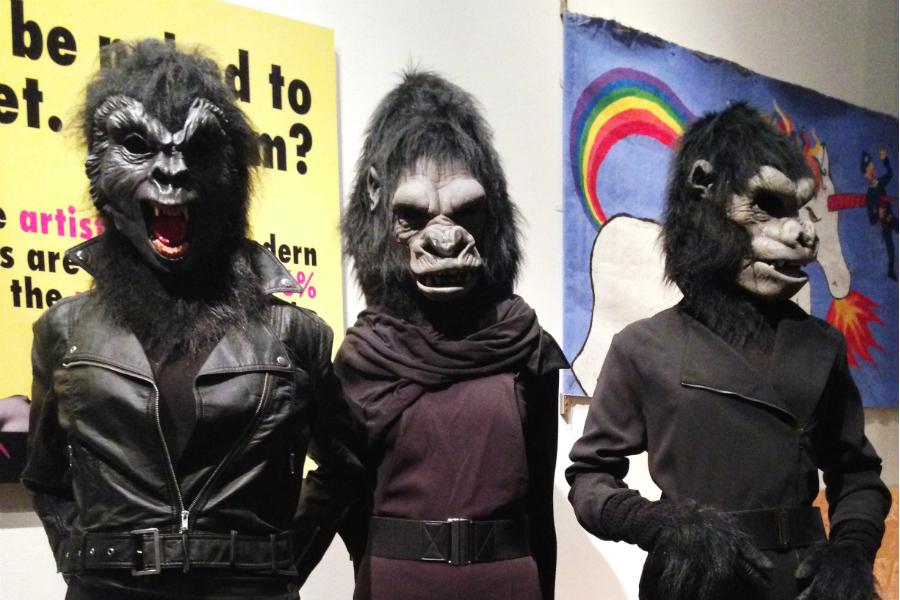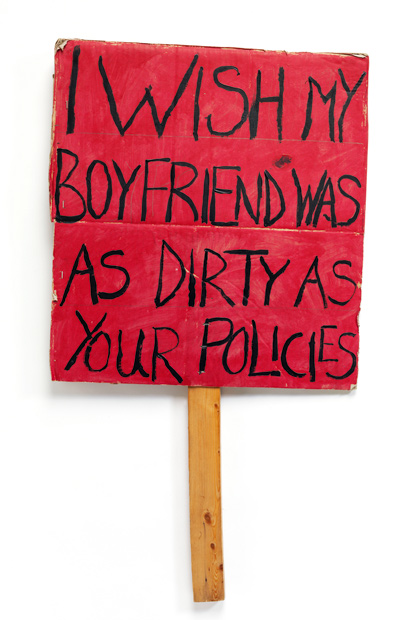“Every Tool Is A Weapon If You Hold It Right”: Disobedient Objects At The V&A

What hand-made creations do you associate with activism and protest? Jade French visits a very special collection of ‘disobedient’ objects (and tries to dodge the gift shop) at the V&A…
Want to know how to make your very own DIY tear-gas mask from a plastic bottle? Have you ever wondered what it would be like to use a remote-controlled graffiti robot? You’re in luck. The Victoria and Albert Museum’s (V&A) current exhibition, Disobedient Objects, explores the role of objects in protest, activism and movements for social change. Uniquely, these objects have been loaned from activist groups from all over the world, with many rarely before seen in a museum context.
There is something very curious about the placement of this exhibition. A collection of grassroots protest tools, placed in the marble-clad grandeur of the V&A (a place named after an Empress and her consort) jars, somewhat. As I enter the show through a gigantic gift shop, with Disobedient Object books lining the shelves, I can’t help but wonder if ‘packaging’ these items of struggle isn’t just plain crass.
On the flip side, perhaps the curators of the V&A are trying to challenge the image that many people have of what museums contain and how we view what is displayed. Perhaps they are attempting to subvert what we think the museum should celebrate or elevate. I’m intrigued.
The exhibition is really busy. Whilst that’s not necessarily surprising for a large London-based gallery, the Disobedient Objects room is unusually energised with people discussing and exploring, which feels refreshing. An imposing structure of floor to ceiling steel bars dominate, innovatively used as a means to hang objects and artworks, and on second look, reminds me of a large prison cell. There are things displayed at all levels; framed by marble pillars, a mammoth ‘CAPITALISM IS CRISIS’ banner hangs from wall to wall, joined by several more banners from various protest groups, including the women at Greenham Common, Unite, and Occupy.

The scale of these disobedient objects is notable. As well as familiar banners and placards, there are many unfamiliar smaller objects which pack an emotive punch. Bust Cards are neatly displayed in a glass case; these small booklets were carried in case of arrest and contained rights, do’s and don’ts on arrest and legal advice, and were produced and distributed by many marginalised groups. I read the accompanying stories from their owners and imagine these items being frantically pulled out of pockets to be read: ‘Arrested? Homosexual?’; ‘Legal Advice: Stop & Search’; ‘Release Bust Card: Your Rights on Legal Arrest in Protest”.
These disobedient objects range from the handmade and low budget, to the technologically-advanced and sophisticated. The latter includes my personal favourite, the ‘Flone’, made in Spain, 2013: a home-made flying device which carries a mobile phone to film police at demonstrations. It is amazingly intricate and I only wish there was an opportunity to see it in action.
Walking past the steel bars, the second part of the room contains the beautiful Tiki Love Truck, designed and constructed to take to the streets in protest. Brightly mosaiced by craftivist Carrie Reichardt, the vehicle remains a poignant anti-death penalty statement in memory of John Joe “Ash” Amador, who had received the death sentence for killing a cab driver 13 years earlier. Look carefully at the happy and vibrant mosaic design and you can see a cast of his death mask resting above the windscreen.
Behind the truck, projections of various protests, demonstrations and archive footage play on from political happenings worldwide and throughout history. I sit for a while and watch. Gaza, Berlin, the student protests, The Suffragettes, Apartheid, Occupy. I find it difficult to watch the violence: on show is a spectrum of the battlefield of protest. It is at this point that the gravity of all of these objects hits me, and I understand the power of their disobedient nature.
That said, it’s not all doom and gloom. There are witty works on display, including a poster and accompanying costumes from undercover feminist artists the Guerrilla Girls. They ask: “Do women have to be naked to get into the Met. Museum? Less than 5% of the artists in the Modern Art sections are women, but 85% of the nudes are female”. I enjoyed watching crowds of people taking amusing guerrilla selfies (tweeting #sexisminart?).
The 2011 placard from Coral Stoakes — confessing ‘I wish my boyfriend was as dirty as your policies’ — also gets a giggle.
So, the art of rebellion? Many of the objects on display were produced not from a place of time and expense, but of urgency and intent. For me, this clashes so vibrantly with its grandiose environment that I can’t help but like it. I just find it a shame that this display was crammed into such a small space, making it feel peripheral.
Earlier, I asked myself a question: did I feel it right that these objects were on display in such a place? Well, in short, yes. Positioning this exhibit at the V&A means that these struggles, many of which are ongoing, are reaching a new and wider audience. These disobedient objects, so rich with purpose, reveal the ingenious, beautiful and subversively humorous ways that we can speak out and be heard.
Activist Ani DiFranco once said: “Every tool is a weapon if you hold it right”. This exhibition demonstrates that art is not always passive; it can be dynamic, transforming itself into a surprising vehicle for change.
Jade French
Disobedient Objects continues at the Victoria & Albert Museum until 1 February 2015 – Free Admission






